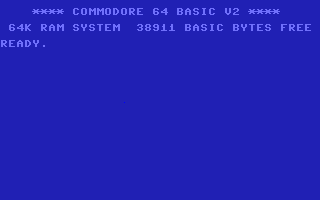You are using an out of date browser. It may not display this or other websites correctly.
You should upgrade or use an alternative browser.
You should upgrade or use an alternative browser.
Just a test
- Thread starter redguru
- Start date
silverfish
New member
yo!
S
Spartacus
Guest
wtf is dxm?
redguru
New member
4everhung said:wtf is dxm?
The active ingredient in Cough syrup
needtogetaas
New member
lol nice pole.
redguru
New member
jnuts said:65535....
Reminds me of the Commodore 64
LOL. I used to run a Cnet64 BBS on ganged C1541's
redguru
New member
jnuts said:I've been meaning to setup an emulation of the C64 on my linux machine. Just for old times
Gonna be tough, I was gonna try to emulate an Amiga Cnet BBS and have a slip connection in to the board from the net. If we could get two c64's hooked up maybe we could play Archon?

jnuts
New member
blut wump
New member
I think there's no 'delete post' option at all in the Bookie Forum.redguru said:Nope, no delete post option on the first post. Good thing, didn't want it to occur in the bookie forum.
I used to have my Atari ST linked to the C64. I cobbled two printer cables together and then wrote drivers for each end to move data back and forth. One of my friends wrote a 6502 assembler on the ST with no means of moving the data across.
blut wump
New member
The basic was actually pretty fast for what it was; certainly compared with the Spectrum's basic which gobbled up memory and speed on number storage. For any decent speed, though, assembler was the way to go. Technically, it had a 6510 rather than a 6502 because of the IO ports on locations 0 and 1.
A tedious processor to use, though, having to shuffle everything through the Acc and zero-page.
A tedious processor to use, though, having to shuffle everything through the Acc and zero-page.
hamstershaver
New member
i could of told you thatredguru said:Nope, no delete post option on the first post. Good thing, didn't want it to occur in the bookie forum.
hamstershaver
New member
settle this shit!!@!!!!!
redguru
New member
hamstershaver said:i could of told you that
Well, why didn't you?
hamstershaver
New member
i just didredguru said:Well, why didn't you?
redguru
New member
blut wump said:It's a fair cop but society is to blame.
That's too obscure even to be british humor.
gjohnson5
New member
blut wump said:The basic was actually pretty fast for what it was; certainly compared with the Spectrum's basic which gobbled up memory and speed on number storage. For any decent speed, though, assembler was the way to go. Technically, it had a 6510 rather than a 6502 because of the IO ports on locations 0 and 1.
A tedious processor to use, though, having to shuffle everything through the Acc and zero-page.
C is low level enough that I think most people will not need to use assember.
Assembler can be embedded inside C code so If some assembly language is needed then inline assembler can be used.
Device drivers are probably the biggest place assembler is used as the code which talks to hardware should be as fast as possible
blut wump
New member
In general this is true. Back on the old home micros, though, fitting in a C interpreter was just too expensive an option, with regard to memory, to be viable. Typically one had a total of 64K to play with for code and graphics. The game code typically took around 10K of that and then you start pulling your hair out compressing and optimizing graphics and screen-buffers and tracking stack usage.
I have written games in C/C++ but with the graphics routines written in asm. This has often been a reasonable compromise. Graphics processing is almost always the bugbear in a game. Inline assembler is often an option for small routines but the flexibility of using a dedicated assembler package can offer greater convenience.
As PCs became prevalent and processing power and memory grew, the relevance of the raw speed of asm fell aside to the convenience of a higher-level language for porting purposes and the fact the ever fewer people had any mastery of asm. In the main, too, C/C++ was good enough. Even now, though, on a PS2, for example, much of the raw vertex processing will be written in MIPS assembler while the main game code is in C or C++.
I've also seen games written in Python and Pascal.
I have written games in C/C++ but with the graphics routines written in asm. This has often been a reasonable compromise. Graphics processing is almost always the bugbear in a game. Inline assembler is often an option for small routines but the flexibility of using a dedicated assembler package can offer greater convenience.
As PCs became prevalent and processing power and memory grew, the relevance of the raw speed of asm fell aside to the convenience of a higher-level language for porting purposes and the fact the ever fewer people had any mastery of asm. In the main, too, C/C++ was good enough. Even now, though, on a PS2, for example, much of the raw vertex processing will be written in MIPS assembler while the main game code is in C or C++.
I've also seen games written in Python and Pascal.
S
Spartacus
Guest
I was smoking a lot of pot in that era


 Please Scroll Down to See Forums Below
Please Scroll Down to See Forums Below 












 x
x 